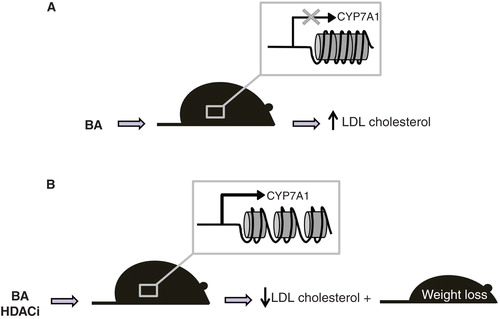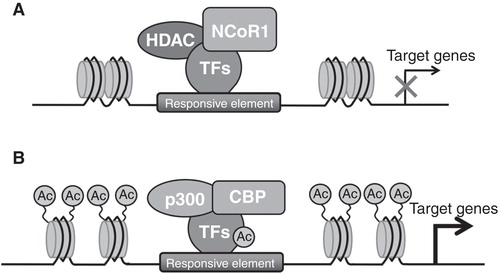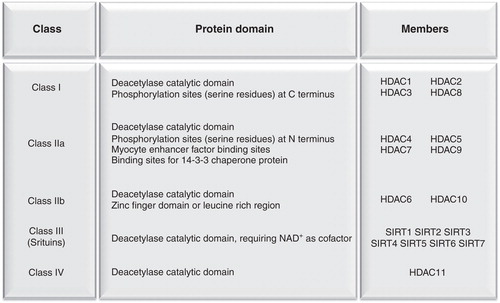Figures & data
Figure 1. Conformational changes of chromatin induced by histone modifications. On the left, euchromatin represents acetylated and transcriptionally active state. On the right, DNA methylation and histone deacetylation induce chromatin packaging (heterochromatin) making it less accessible to transcriptional factors.

Figure 3. Model of feedback regulation of CYP7A1 by bile acids. Bile acids (BA) induce HDAC7 translocation from cytoplasm to nucleus and the sequential recruitment of HDAC7, 3, 1, SMRT and NCoR1 on CYP7A1 gene promoter. Histone deacetylation mediated by this repressor complex prevents the recruitment of transcriptional factors leading to CYP7A1 inhibition.

Figure 4. HDACi in Ldlr-/- mice induce CYP7A1 expression and decrease serum LDL-cholesterol and body weight. (A) Bile acids repress CYP7A1 expression leading to LDL cholesterol increase. (B) Treatment with HDACi derepresses CYP7A1 and increase conversion of cholesterol to bile acids, ultimately reducing LDL cholesterol and body weight.

Figure 5. NCoR1 modulates transcription of oxidative genes in skeletal muscle. (A) NCoR1 is recruited on the responsive element in the promoter of PPAR and ERR target genes forming a repressive complex and inhibiting the expression of these genes. (B) The ablation of NCoR1 leads to HDACs dissociation and to the recruitment of the acetyltransferases p300/CBP with the consequent derepression of target gene transcription.

